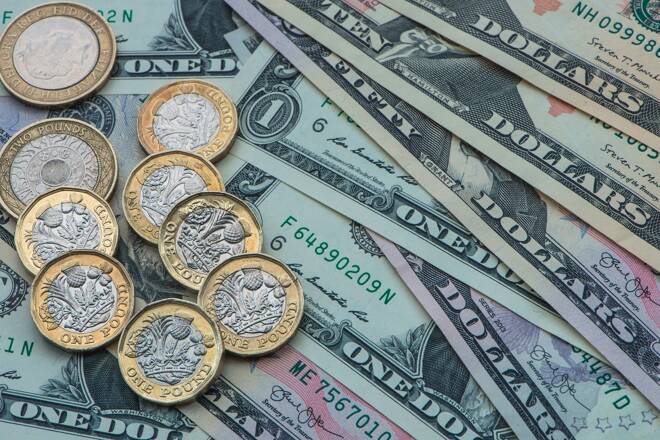GBP to USD Forecast: Bullish Signals Point to $1.28 Amid Central Bank Focus
US factory orders on Monday could impact the Q1 2024 Fed rate outlook, while US service sector data and the Jobs Report will carry more weight.
Highlights
- The GBP/USD rose by 0.62% on Friday, ending the session at $1.27010.
- UK manufacturing PMI numbers and Fed Chair Powell delivered the gains.
- On Monday, the Bank of England and US factory orders will be in focus.
The Friday GBP/USD Overview
On Friday, the GBP/USD gained 0.62%. After a 0.56% fall on Thursday, the GBP/USD ended the day at $1.27010. The GBP/USD fell to a low of $1.26099 before rising to a Friday high of $1.27159.
Bank of England in Focus Pre-UK Services Numbers
On Monday, Bank of England Monetary Policy Committee member Swati Dhingra is on the calendar to speak. Views on the economic outlook and the interest rate path will influence the buyer demand for the Pound.
Recent Bank of England commentary and UK economic indicators may have delayed the timing of a 2024 BoE rate cut. November private sector PMI numbers painted a rosier picture of the UK economy.
Hawkish BoE comments before the finalized Services PMI (Tues) could support a GBP/USD move toward $1.28.
Notably, Bank of England Governor Andrew Bailey may continue to dampen bets on BoE rate cut talks. The BoE Governor will on Wednesday after the Services PMI numbers.
US Factory Orders and the Fed in Focus
On Monday, US factory orders will garner investor interest. The US manufacturing sector accounts for less than 30% of the US economy. A slump in factory orders could fuel bets on a Q1 2024 Fed rate cut to avert a hard landing. Manufacturing data from Friday revealed a more marked contraction across the sector, impacting demand for the US dollar.
However, US ISM Non-Manufacturing PMI numbers (Tues) and the US Jobs Report (Fri) will have more impact. Waning service sector activity and weaker wage growth could cement a Q1 2024 Fed rate cut.
After Fed Chair Powell’s speech on Friday, Fed commentary also needs consideration. Dovish comments favoring rate cut discussions could bolster bets on a Q1 Fed rate cut.
Short-Term Forecast
Near-term trends for the GBP/USD will hinge on UK and US services PMIs and the US Jobs Report. Weaker-than-expected US service sector activity and softer wage growth could tilt monetary policy divergence toward the Pound. An upward revision to the UK Services PMI would support bets on an H2 2024 BoE rate cut.
GBP to USD Price Action
Daily Chart
The GBP/USD held above the 50-day and 200-day EMAs, sending bullish price signals. Significantly, the 50-day EMA crossed through the 200-day EMA, another bullish price signal.
A GBP/USD move to $1.27500 would give the bulls a run at the $1.28013 resistance level.
Central bank commentary and US factory orders are in focus.
However, a GBP/USD fall through the $1.26000 handle would bring the $1.24410 support level into view.
The 14-period daily RSI reading of 65.50 indicates a GBP/USD move to $1.27 before entering overbought territory.
4-Hourly Chart
The GBP/USD remained above the 50-day and 200-day EMAs, affirming bullish price signals.
A GBP/USD breakout from $1.27000 would bring the $1.28013 resistance level into play.
However, a fall through the 50-day EMA would give the bears a view of the $1.24410 support level.
The 14-period RSI on the 4-hour Chart at 54.91 indicates a GBP/USD move to the $1.28013 resistance level before entering overbought territory.
About the Author
With over 28 years of experience in the financial industry, Bob has worked with various global rating agencies and multinational banks. Currently he is covering currencies, commodities, alternative asset classes and global equities, focusing mostly on European and Asian markets.
